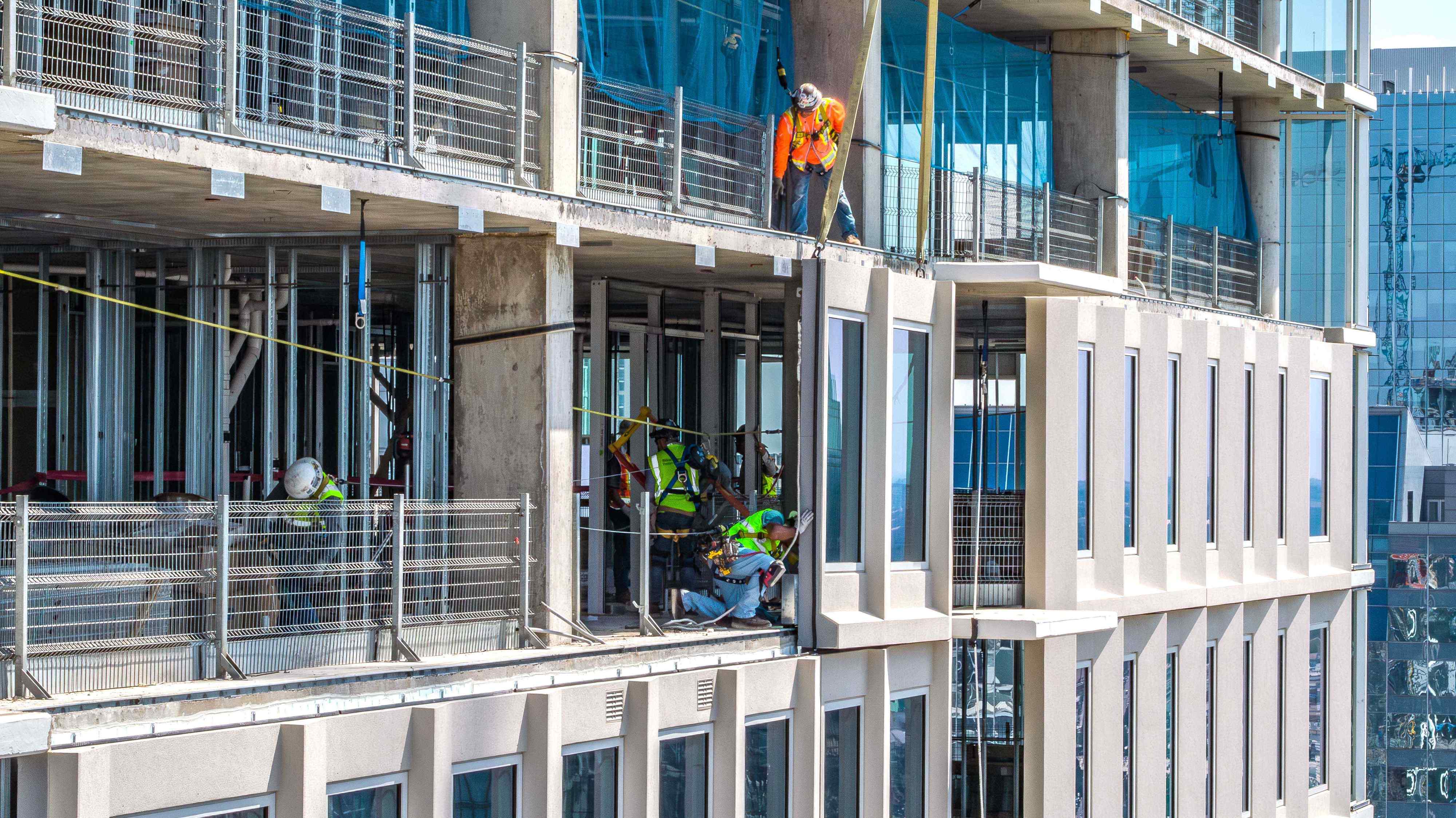In today's digital age, where drone photography and drone video play pivotal roles, the importance of photography and videography in architecture has transcended mere documentation to become crucial elements of marketing strategies. Among the myriad tools available, drone photography and drone video stand out for their ability to offer breathtaking perspectives and dynamic storytelling capabilities. This article explores how drone technology revolutionizes architectural imagery, upgrading marketing efforts by offering unparalleled visual narratives and engaging perspectives.
Breaking Boundaries: Aerial Insights
Drone photography has shattered the constraints of traditional ground-level views, offering architects, designers, and marketers a bird's-eye view of their projects. From towering skyscrapers to sprawling landscapes, drones provide an expansive perspective that enhances understanding and appreciation of architectural design. Unlike static ground shots, drone photography captures the scale, context, and intricate details of buildings in relation to their surroundings.
Beyond the Ground-Level View
The primary advantage of aerial perspectives lies in their ability to showcase architecture in a contextually rich environment. By lifting the camera high above ground level, drones capture expansive panoramas that traditional photography struggles to replicate. This elevation not only highlights the architectural form but also integrates it into the broader landscape, emphasizing its role and impact within its surroundings.
Capturing Scale and Context
Imagine viewing a city skyline from above, where buildings once seen as isolated entities now form interconnected patterns. Drone photography excels in revealing these spatial relationships, offering viewers a comprehensive understanding of how architecture interacts with its environment. Whether showcasing urban developments or rural retreats, aerial shots provide a holistic view that grounds viewers in the broader context of architectural projects.
Evoking Emotion: Cinematic Storytelling
Beyond their utility in documentation, drones elevate architectural imagery to cinematic heights, transforming static visuals into dynamic narratives that evoke emotion and intrigue. Through creative movement and framing, drone video introduces a narrative element, guiding viewers through architectural spaces with a sense of fluidity and purpose.
Movement and Dynamic Shots
One of the most compelling aspects of drone video is its ability to capture dynamic movements that breathe life into architectural storytelling. Smooth aerial transitions, sweeping arcs, and dramatic reveals add a cinematic flair, engaging viewers in a visual journey that unfolds seamlessly. This dynamic approach not only showcases architectural features but also invites viewers to experience spaces from unique vantage points, fostering a deeper connection and emotional response.
Enhancing Architectural Narratives
Beyond aesthetics, drone video enables architects and marketers to tell compelling stories about design intent, functionality, and human interaction within spaces. By combining aerial views with ground-level perspectives, videos can juxtapose grand aerial views with intimate, human-scale interactions, enriching the narrative with layers of meaning and context. This narrative depth not only enhances viewer engagement but also communicates the essence of architectural projects in a memorable and impactful manner.
Elevating Marketing Strategies: Impact and Engagement
In the competitive realm of architectural marketing, differentiation is key to capturing and retaining audience attention. Drone photography and drone video offer a unique edge by providing visually striking content that stands out in crowded digital landscapes. By leveraging these innovative tools, architectural firms can elevate their marketing strategies and effectively communicate their brand identity and project capabilities.
Visual Appeal and Engagement
The visual allure of drone imagery is undeniable, capturing attention with its expansive views and immersive details. In marketing campaigns, these visuals serve as powerful hooks, drawing viewers into narratives that unfold across skylines, construction sites, and architectural marvels. Whether used in social media posts, websites, or promotional materials, drone photography enhances visual storytelling, compelling viewers to linger longer and explore deeper.
Differentiating Brand Identity
In a saturated market, establishing a distinctive brand identity is crucial for architectural firms seeking to stand out. Drone photography offers a unique opportunity to showcase projects from a perspective that is both awe-inspiring and informative. By consistently incorporating drone imagery into their marketing collateral, firms can reinforce their commitment to innovation, creativity, and forward-thinking design, resonating with clients who prioritize vision and excellence.
Benefits for Construction Companies
For construction companies, drone photography and drone video present invaluable advantages in marketing their projects and capabilities. By capturing ongoing construction progress from aerial perspectives, drones provide stakeholders with real-time updates and comprehensive views of site logistics. This transparency not only enhances project management but also instills confidence in clients and investors by showcasing the scale and scope of their developments.
Enhanced Project Documentation
Drones excel in documenting construction milestones and phases, offering detailed visual records that aid in project monitoring and compliance. From site surveys to progress reports, aerial footage provides construction companies with a comprehensive overview of their projects' evolution, facilitating informed decision-making and proactive problem-solving.
Showcasing Technical Expertise
By showcasing construction projects through drone imagery, companies can highlight their technical expertise and project management capabilities. High-resolution aerial photos and videos convey professionalism and attention to detail, positioning construction firms as industry leaders committed to delivering quality and innovation.
Conclusion
Drone photography and drone video represent more than just technological advancements in photography; they signify a paradigm shift in how architecture and construction are perceived, understood, and marketed. By embracing aerial perspectives and cinematic storytelling, architects, marketers, and construction professionals can transcend conventional boundaries, creating compelling narratives that resonate with audiences on an emotional and intellectual level. As architectural and construction photography evolve with technology, so too do the opportunities for firms to differentiate themselves and leave a lasting impression in the competitive landscape of modern architecture and construction.

